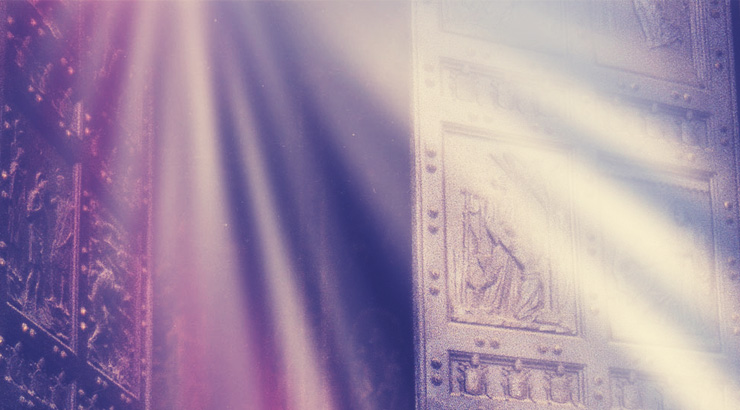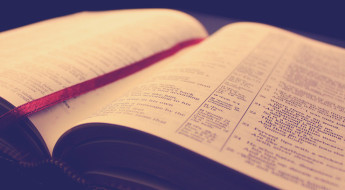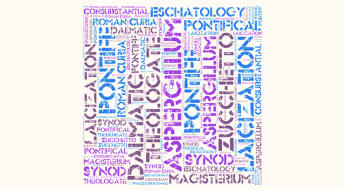This Is No Ordinary Door

The Church opened a door on Tuesday. I know what you’re thinking. Cool, Church, don’t you do that every day? How else am I supposed to get in there? I mean, when I’m late for Mass every other Sunday (I swear I try to be a good Catholic), I even open the door myself. “Aha!” says the Church, “Bet you can’t open THIS door…”
That’s because it’s the Holy Door, and it’s sealed. But NOT ANYMORE! The Holy Door (Porta Sancta, for all you latin nerds) is a sacred entryway that is opened only during Jubilee years, so about every 25 years. The last time was in 2000. Crossing through this door is a visible manifestation of renewal in Christ, “from sin to grace, from slavery to freedom, from darkness to light.” Good news: Pope Francis just started the Jubilee of Mercy on December 8th, 2015 when he opened the Holy Door at St. Peter’s Basilica. Better news: YOU get to visit the Holy Door and receive the grace of God’s mercy!
If you were paying attention, there are two things that don’t add up in that last paragraph. First, why are we having a Jubilee year if the last one was just 16 years ago? Second, how are we all supposed to cross through this Holy Door when it’s all the way in Rome? The answer to both of these questions: Vatican II.
Vatican II Made the Catholic Church ACCESSIBLE
December 8, 2015 marked the 50th anniversary of the closing of the Second Vatican Ecumenical Council in 1965. Pope Francis announced the new Jubilee to celebrate and “to keep this event alive.” Following Vatican II, “the Church entered a new phase of her history. The Council Fathers strongly perceived, as a true breath of the Holy Spirit, a need to talk about God to men and women of their time in a more accessible way.” This is a beautiful and eloquent explanation from the Pope, but let’s get some more context so we can fully understand what’s going on here.
Historically, only four Holy Doors were available during jubilee years– one at each of the Papal Major Basilicas of Rome: St. Peter in the Vatican, St. John Lateran, St. Paul Outside the Walls, and St. Mary Major. Faithful pilgrims would have to travel all the way to Rome in order to cross the threshold of the Holy Door during a jubilee. In this Jubilee of Mercy, Pope Francis wants to make the Holy Door accessible, in light of Vatican II. He has invited every diocese in the world to make its own Door of Mercy. This Sunday the 13th, the Pope will open the Holy Door at St. John Lateran, and each diocese will likewise open a Holy Door at its cathedral or basilica; some popular shrines will also have a Holy Door. Now everyone will be able to access this beautiful outpouring of God’s mercy!
What Does the Door of Mercy Mean to Us?
This Advent and throughout the new Church Year, we are invited to partake in the healing mercy of God’s love, exemplified by The Door of Mercy. It is the perfect way to prepare our hearts for Christ. Pope Francis has called upon us to encounter the “face of mercy” and to be that “face of mercy” for others. We must make mercy accessible. That seems like big (if not a little vague) task so…
A Few Practical Ways to Make God’s Mercy Accessible in Your Life:
-
Receive God’s mercy before you give it.
Make a short pilgrimage to the cathedral in your diocese and walk through the Holy Door. (You have from Sunday December 13th until November 2016 to do so.) You are encouraged to receive the sacrament of Reconciliation and the Eucharist after crossing the threshold of God’s abundant mercy.
-
Receive mercy from others too.
Reflect on the places in your life where mercy is needed. Ask God to help you take the first step to repair damaged relationships by humbling yourself and admitting your faults. Seek out the “face of mercy” in others by asking for forgiveness. Ask a teacher for mercy when grading your final exam (kidding… but not really).
-
Give the gift of mercy.
You don’t have to wait for someone to ask for forgiveness or admit wrongdoing before you extend forgiveness. Spend some time in prayer, and ask God for the strength to show the “face of mercy” to the ones who have hurt you the most. It will be hard, but it will go a long way for building the Kingdom of God. Remember “blessed are the merciful…” (Matthew 5:7).
-
Find ways to practice mercy in everyday life.
When you are tempted to judge others you don’t even know,– Christians who are oddly offended by red Starbucks cups, guys wearing shorts in 20-degree weather, terrible drivers that cut you off– remember that judgment is not your job. When a classmate or coworker does that thing that annoys you, try to appreciate him or her as a whole person. Who are we to nitpick at the shortcomings of others, while we have so many of our own? God has called us to take part in administering His mercy instead. Say a prayer asking God to bless each person you meet.
Now go out, and find more ways to encounter God’s mercy!
If you want more info on the Jubilee of Mercy or the Holy Door, here’s the website. If you want a concise history and FAQ of the Holy Door, this wonderful Rita A. Thiron lady compiled an awesome comprehensive document! I don’t know who you are, but thanks!







Leave a Comment